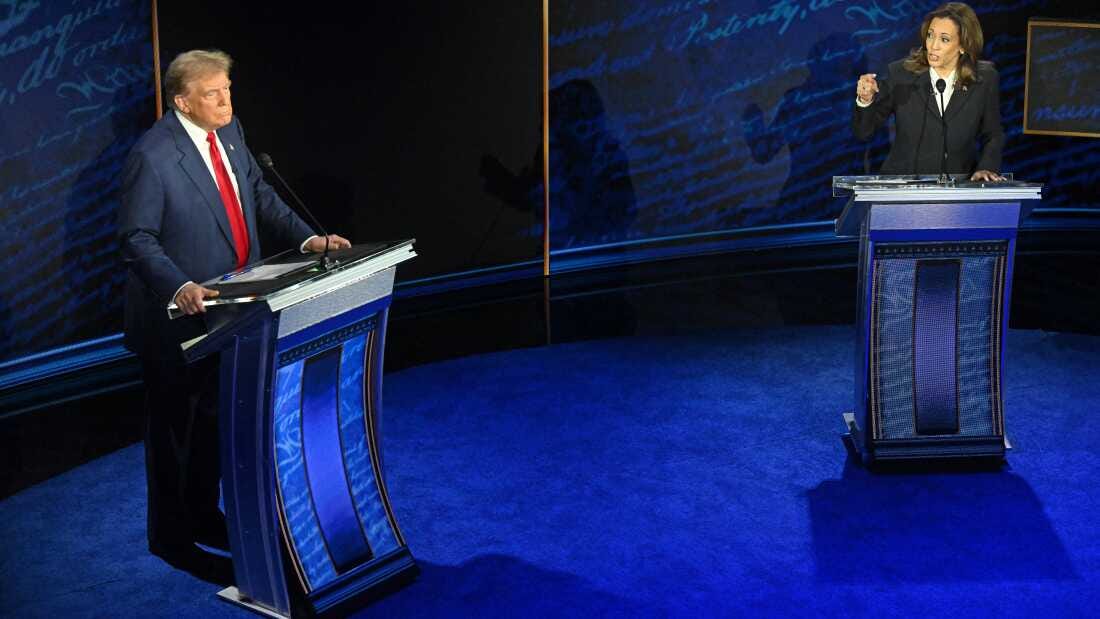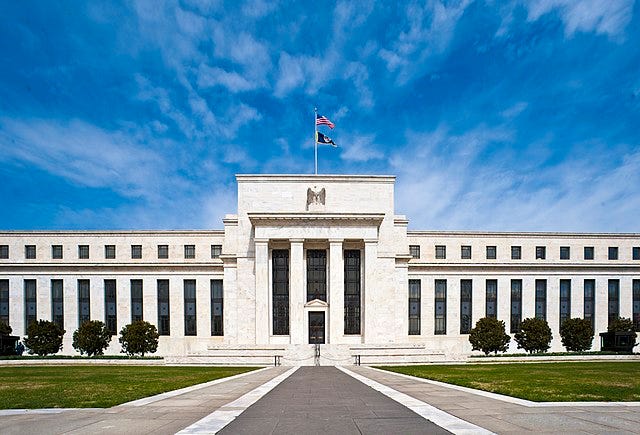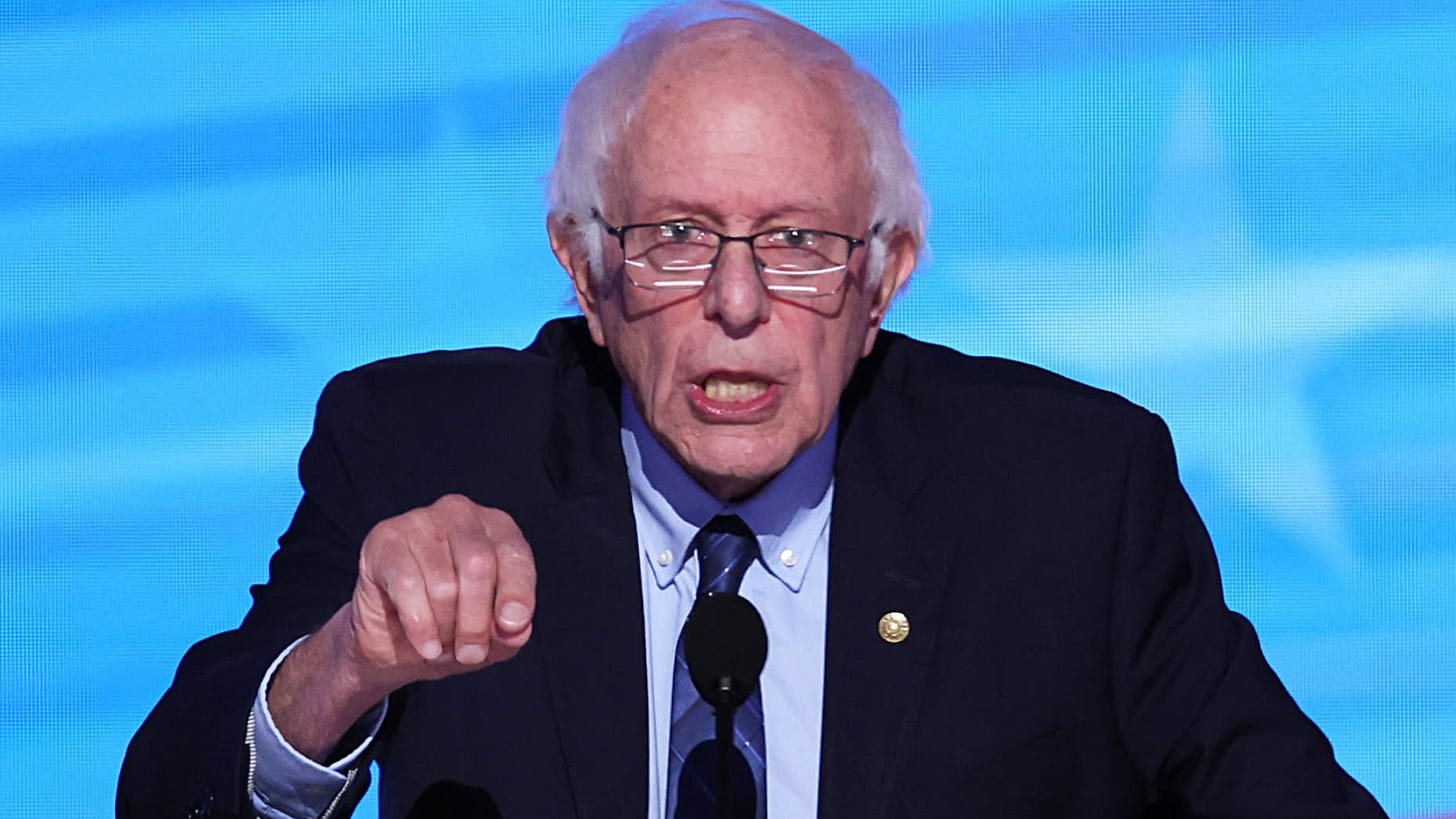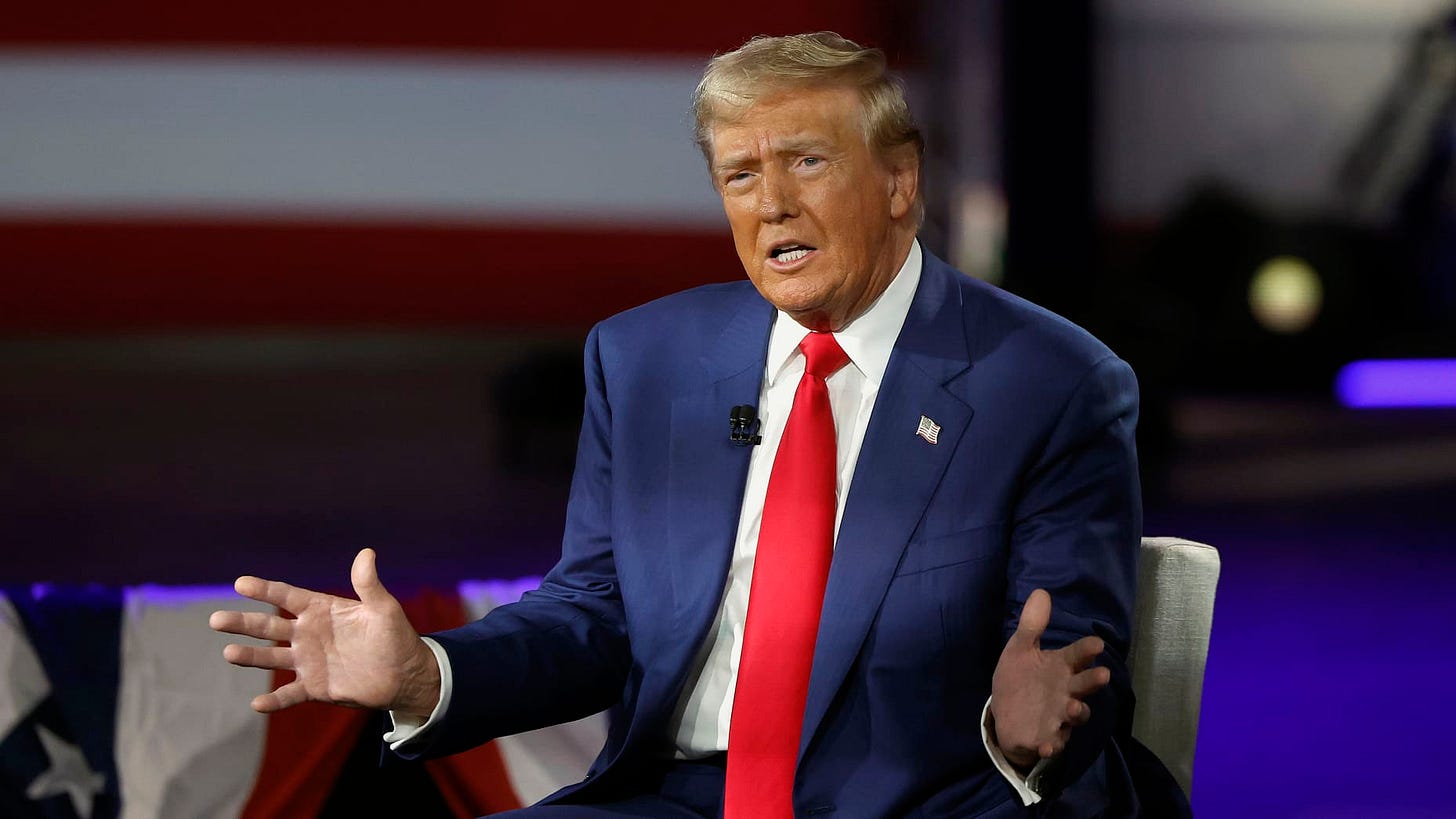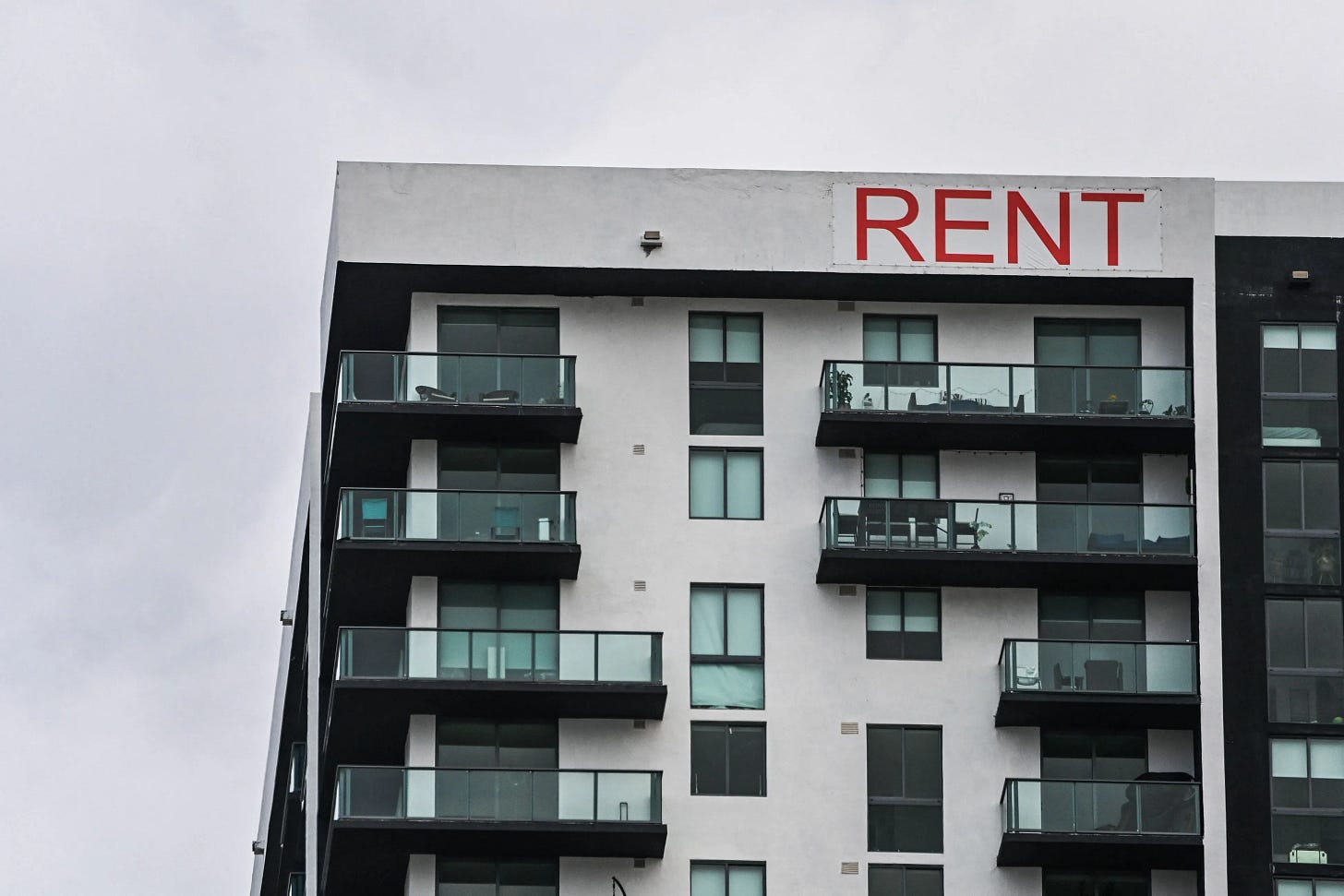288. Presidential Debate Ignored Spending Problem | This Week's Economy Ep. 78
What we learned from the debate and more in today's podcast.
Hello Friends!
Welcome back! In episode 78 of This Week's Economy, I discuss the presidential debate, elevated inflation, overspending on public education, high housing prices, and much more while noting how pro-growth policies are needed to let people prosper. Watch the episode on YouTube below, listen to it on Apple Podcast or Spotify, and visit my website for more information.
1. Debate Proves Big Government Is the Problem
In the News: Kamala Harris is positioning herself to compete with Donald Trump on economic issues, focusing on subsidies, tax credits, and price controls aimed at middle-class voters. Her proposals include a $6,000 tax credit for new parents, while his includes a $5,000 one, subsidies for first-time homebuyers by her, and price controls on groceries by her. Harris’s approach aims to counter Trump’s economic record but risks further driving up costs in a high-inflation environment. Source: NBC News and NPR
My Take:
Both Candidates’ Big Spending is Unsustainable: Both Harris and Trump favor policies that involve significant government spending rather than promoting free-market solutions. Subsidies and tax carve-outs from both candidates simply expand government intervention, crowding out private investment and innovation.
Harris's Policies Will Raise Prices, Not Lower Them: Harris’s proposed homebuyer subsidies will increase demand without addressing supply constraints. This imbalance will push prices higher, exacerbating affordability issues.
Tariffs Hurt Consumers, Not Competitors: Trump’s reliance on tariffs as a solution to global economic competition acts as a hidden tax on American consumers. These tariffs increase the prices of imported goods and harm employers and households by raising production costs.
2. Fed Must Tackle Elevated Inflation First
In the News: The latest CPI report shows that while inflation has moderated, it’s still running high. Headline inflation is up 2.5% year-over-year, and core CPI (excluding food and energy) remains at 3.2%. This signals that inflation pressures are persistent, particularly in key sectors like housing and services. The Federal Reserve is expected to announce its next interest rate decision on Wednesday, with inflation a pressing concern. Speculation is growing about whether the Fed will cut rates, but many worry this could fuel further inflation. Jerome Powell will hold a press conference following the decision. Source: Federal Reserve and BLS CPI Report
My Take:
Inflation Control Should Be the Fed’s Top Priority: The Federal Reserve’s main responsibility is managing inflation. With inflation running well above the target 2%, cutting rates now would only exacerbate inflationary pressures and further reduce the purchasing power of families.
Focus on Reducing the Balance Sheet: Instead of lowering interest rates, the Fed should focus on reducing its massive $7.1 trillion balance sheet, which is keeping too much liquidity in the economy. Selling off assets like mortgage-backed securities would help tighten monetary conditions without cutting rates.
Small Adjustments Are Risky: Even a modest rate cut would send the wrong signal to markets and risk higher inflation. The Fed should hold rates steady or raise them to fight inflation effectively and avoid repeating past monetary mistakes like in the 1970s
3. Capital Gains Tax Hike Kills Growth
In the News: Kamala Harris has proposed increasing the capital gains tax to 28%, a significant jump from the current rate. Bernie Sanders has voiced support for even higher taxes, arguing that taxing wealth is essential for addressing income inequality. Critics worry that these higher taxes will discourage investment and hurt the economy. Source: Forbes and CNBC
My Take:
Higher Taxes Discourage Investment and Growth: Raising the capital gains tax to 28% will reduce incentives for investors, stifling entrepreneurship, economic growth, and job creation. Capital investment is key to innovation, and this tax increase would stifle the investments fueling a healthy economy.
Corporate and Capital Gains Taxes Hurt the Economy: Harris’s proposed increases in corporate and capital gains taxes would severely slow economic growth. Companies invest less when they face higher taxes, leaving fewer resources for expansion, job creation, and productivity improvements.
Lower Taxes Drive Prosperity: Instead of raising taxes, the focus should be reducing spending and taxes to encourage more investment. When the private sector has more capital to invest, it spurs innovation, increases productivity, and boosts long-term economic growth, benefiting Americans.
4. Trump’s Tariff Threat Harms Americans
In the News: Donald Trump has proposed imposing 100% tariffs on countries that abandon the U.S. dollar as the world’s reserve currency. Trump argues that maintaining the dollar’s dominance is crucial to the U.S. economy, but critics point out that high tariffs would raise consumer prices and damage global trade relations. Source: CNBC
My Take:
Tariffs Are Taxes That Americans Pay: Tariffs raise the price of imported goods, taxing American consumers and businesses. Trump’s proposed 100% tariffs would result in higher costs for everyday items, with households bearing the brunt of these higher prices.
Tariff Policy Hurts U.S. Competitiveness: Rather than helping the U.S. economy, tariffs reduce competition and limit the variety of products available to consumers. This results in inefficiencies and higher costs that harm American businesses trying to compete globally.
Free Trade Encourages Growth: The most effective trade policy is reducing tariffs and promoting free trade. Open markets foster competition, innovation, and lower consumer prices, creating economic growth and greater prosperity.
5. Government Spending Distorts Markets
In the News: Federal funding expires at the end of the current fiscal year on September 30, raising the risk of a government shutdown. While Congress is considering a continuing resolution to avoid this, the White House has indicated it would veto such a measure, pushing for more federal spending in key areas. Source: The Washington Post and The Hill
My Take:
Out-of-control spending Distorts Markets. When the government spends beyond its means and runs deficits, the Federal Reserve prints more money by mostly buying Treasury securities to cover the deficit, which reduces the value of the dollar and increases prices for everyone.
Stop Kicking the Can Down the Road: Congress must address the real issue—excessive spending. Continuing resolutions and temporary fixes only prolong the problem, leading to more waste and inefficiency in government programs.
Cut Spending, Empower the Private Sector: The solution is significant spending cuts, especially in entitlement programs driving the deficit. Reducing the size of government allows the private sector to thrive, creating more innovation, jobs, and prosperity without the inflationary pressures caused by deficit spending.
6. Housing Crisis Rooted in Overregulation
In the News: The U.S. is experiencing a widespread housing affordability crisis driven by restrictive local regulations, zoning laws, and supply chain issues. These barriers have made it difficult to build new housing, leading to skyrocketing home prices and rents. Some even question whether homeownership should remain a part of the American Dream. Source: Bloomberg, The New York Times, and Newsweek
My Take:
Overregulation Is Stifling Housing Supply: Local regulations, restrictive zoning laws, and burdensome permitting processes slow housing construction and raise costs. These barriers to entry reduce supply, driving up prices and making housing less affordable.
Streamlining Regulations Will Increase Supply: The solution is to reduce regulatory hurdles and streamline the permitting process to encourage more housing development. Increasing supply is the only sustainable way to reduce prices and make housing accessible.
Inflation Compounds the Crisis: Fed by federal deficit spending, inflation is also driving up the costs of building materials and labor. To address this, we need fiscal reforms that reduce government spending and bring inflation under control, restoring purchasing power for American families.
7. Texas Overfunds Public Education
In the News: A recent report claims Texas has underfunded public education by 12.6% from 2016 to 2025 when adjusted for state population growth and inflation. However, this measure may be misleading as it does not account for actual student attendance, which paints a different picture. Using Average Daily Attendance (ADA) rather than state population suggests that public education funding in Texas has increased by 12.3% during this period. Source: San Antonio Business Journal
My Take:
Texas Is Overspending on Education: When public education spending is adjusted for student attendance (ADA) and inflation, Texas has increased funding by 12.3% since 2016 rather than underfunding it. The claim of underfunding based on state population growth skews the real picture.
More Spending Hasn’t Improved Outcomes: Despite the increase in funding, student outcomes have not improved. This demonstrates that throwing more money at the education system doesn’t result in better performance or accountability.
Empower Families with ESAs: Texas should replace its outdated school finance system with Education Savings Accounts (ESAs), giving families more control over education funding. ESAs can improve educational outcomes by fostering competition and reducing taxpayer costs in a bloated public education system.
Conclusion
Thanks for joining me in this episode of "This Week's Economy." For more insights, visit vanceginn.com and get a paid subscription to my Substack newsletter at vanceginn.substack.com today so you receive these insights in your inbox. God bless you, and let people prosper.
Keep reading with a 7-day free trial
Subscribe to Let People Prosper to keep reading this post and get 7 days of free access to the full post archives.



